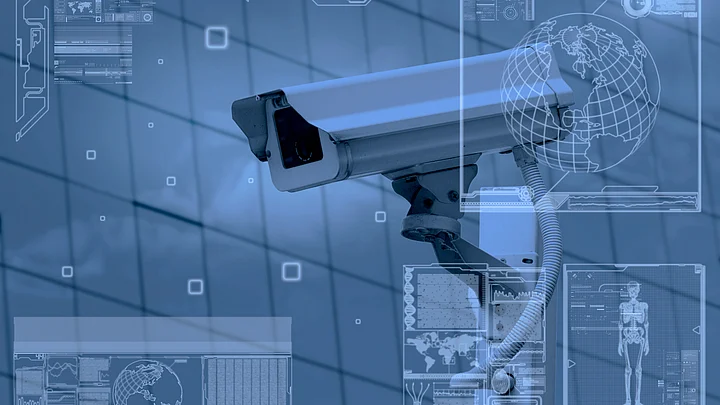The feeling of being watched 24x7 by nearly 5,000 cameras may be an uncomfortable one, but residents of Mumbai are probably not complaining.
Maharashtra Chief Minister Devendra Fadnavis on Sunday inaugurated the Mumbai City Surveillance Project (MCSP), under which 4,717 cameras will constantly keep watch on the city. The move marks the largest security upgrade the Maximum City has ever seen.
The video mass surveillance network was born out of recommendations made by the Ram Pradhan Committee. The committee was set up in response to the 26/11 attacks to assess the city’s response mechanisms in the event of a similar attack. A consortium led by Larsen & Toubro implemented the project. It is the first step in Mumbai’s journey towards becoming a ‘completely digital city’, as envisioned by an ambitious CM Fadnavis.
The Technology
Borrowing London and New York’s security model of extensive CCTV camera coverage of cities, Mumbai Police can now watch over more than 80% of the metro round the clock in high definition.
Installed on poles – some with multiple cameras pointing in various directions – similar to street lights, these cameras are connected mostly by underground fibre-optic cables. The cameras have been installed at strategic and high-value locations that were surveyed over two-and-a-half months by Additional Commissioner of Police Vasant Dhoble.
Around 4,200 of these cameras are fixed, that is, they will point only in one direction. The remaining 500 or less are pan-tilt-zoom cameras with remote directional change, allowing authorities to take a closer look or a wider view of an area. The night-vision cameras are also programmed to automatically detect certain visuals, such as a tree blocking a road or a suspicious object or person and can see as distances as far as 50-120 metres.
The camera network is equipped with face-recognition capabilities which match the visuals captured of suspicious people with faces in the police’s database of known criminals. It also has thermal imaging which can be used to monitor coastal security. Besides, live feeds and alerts will be sent to the control room.
The Uses
In 2006, seven bombs went off in local trains between Mumbai’s Khar and Borivali railway stations, killing 209 people and injuring 714 more. In 2008, terrorists entered the city by sea at Cuffe Parade and went on to kill hundreds more. In 2011, journalist J Dey was shot dead in Powai. What do these three cases have in common? In all these cases, Mumbai police were unable to obtain either sufficient or any camera footage. This a is a far cry from the scenario in cities like New York, London and Shanghai, where obtaining footage from surveillance cameras is often considered the first step in criminal probes.
The face-recognition feature in the Picture Intelligence Unit (PIU) of the cameras will be used to catch wanted criminals and trace missing persons. The 360-degree zoom facility will play a key role in such actions.
All 23 major police stations have been connected and a database of over 1 lakh criminals will soon be uploaded to match with visuals from the live feed. The police tracking feature will allow for quicker dispatch of the nearest police vehicle in case of a crime or any other emergency.
The surveillance network will also be used for city-wide traffic management by sending alerts and designing plans for clearing road congestion. The cameras’ automatic number-plate recognition feature has been integrated with e-Challan, an initiative that involves sending penalty notices to the residences of traffic offenders.
Furthermore, this record will be collated to create a database of habitual traffic rule violators whose licenses will subsequently be suspended. Besides, the cameras will help municipal bodies detect potholes and waterlogged areas, and also address other civic issues such as garbage disposal.
The Future Plan
The state government now plans to rope in private and public establishments such as schools, hospitals, malls, jewellery stores and cooperative housing societies to tap into their CCTV camera feeds using its own network.
The government also plans to direct certain establishments at sensitive locations to install cameras outside. The feed from these cameras will be taken on an ‘as-and-when’ basis. The process will be guided by a standard Voluntary Code of Practice, which specifies the procedure and duration of obtaining and storing the feed, who to contact etc.
While CCTV cameras have met with little or no success in crime prevention, they usually help bring down traffic violations, congestion and street crime, besides improving overall public disciple. This has been seen within the first month of installing CCTV cameras in Pune.
The main hurdles that now confront the consortium and the state relate to smooth transmission, monitoring and storing the data and, most importantly, preventing leakage of sensitive data or its misuse by authorities.
The police are now paying careful notice to the trained “observers” and technicians. By 2021, the state plans to completely take over the project from the L&T-led consortium, having had efficiently trained enough personnel to smoothly run Mumbai’s mass video surveillance network.
(At The Quint, we question everything. Play an active role in shaping our journalism by becoming a member today.)


